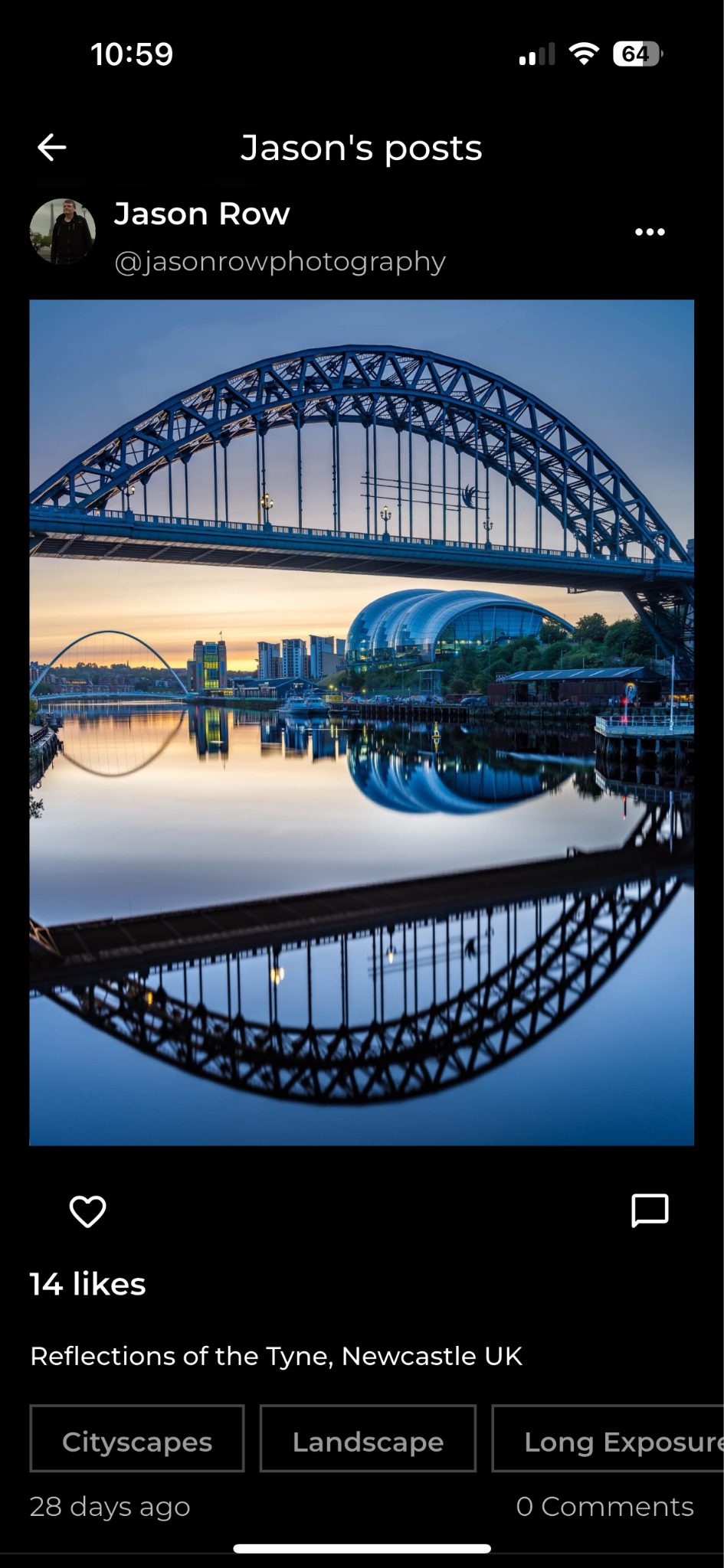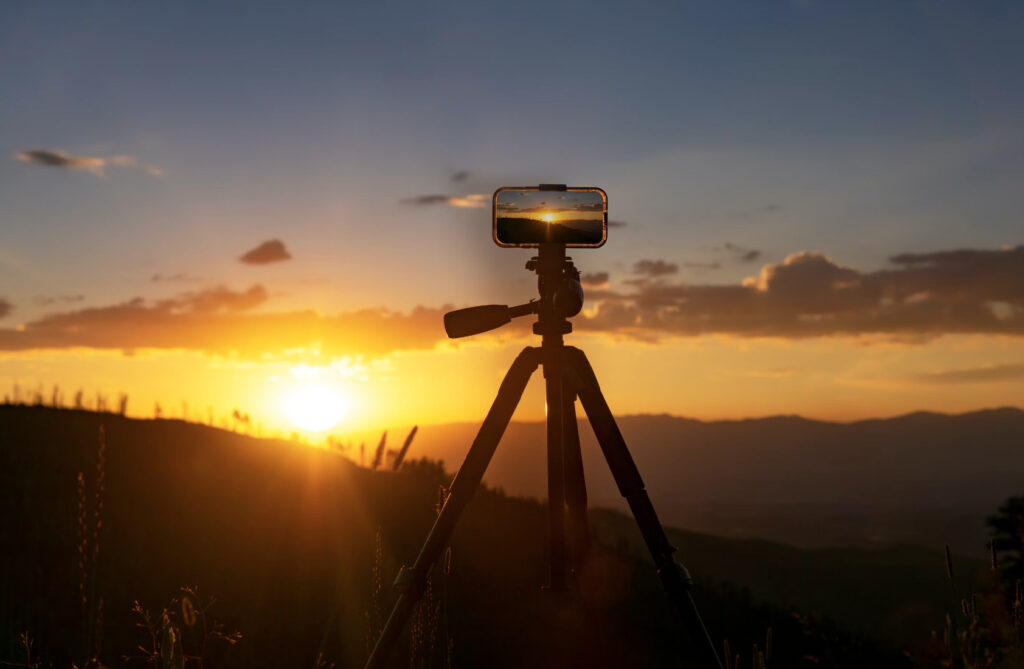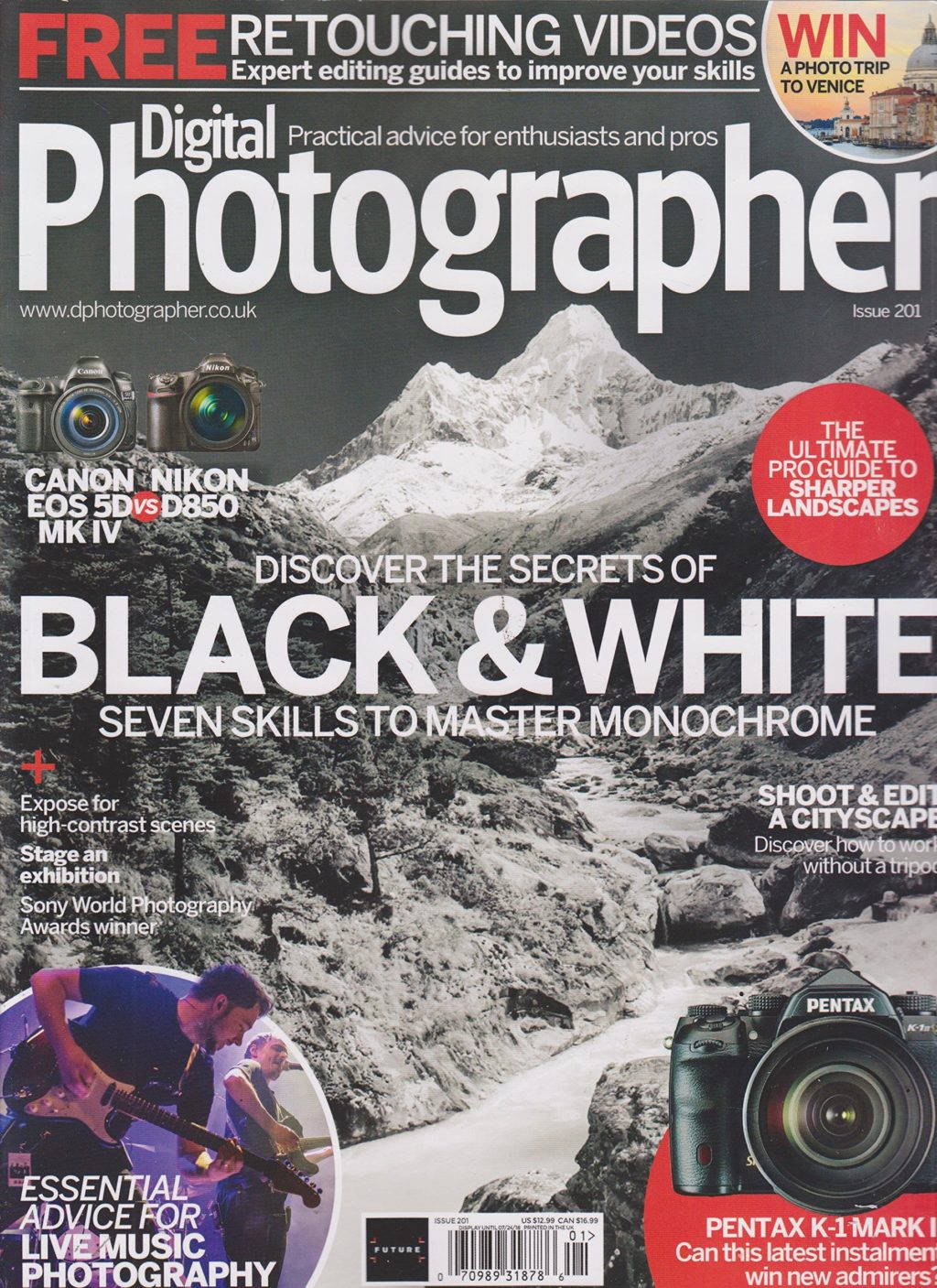I have bought an action camera. I have never surfed, never jumped off of a cliff with a reconfigured tent, nor gone off-piste when skiing, in fact, I don’t even ski. So why have I bought an action camera?
Well, there are two primary reasons. Firstly I wanted to get into a little vlogging. Secondly, they looked like they were fun to use. For vlogging, I could, of course always have used my iPhone on a gimbal. However, I get paranoid about running out of battery power and not being able to get an Uber back. What about a battery pack, I hear you shout. But think of it this way, I am now carrying a phone, a gimbal, and a heavy battery back. With my Osmo Action, I can dispense with the heaviest and bulkiest part of that kit, the gimbal, and replace it with a lightweight mini tripod. I also don’t have to battery watch all the time. So why the Osmo Action?
No Go With The GoPro 9
I took a long look at the GoPro 9 – now the GoPro 10. It does way more than I would ever need, and of course, GoPro is the de-facto action camera. However, digging around Youtube it was clear that there are some issues with it. It freezes, the rear LCD touch screen can be very sluggish and most importantly, it sometimes fails to record. The Osmo Action had none of these problems and was the best part of $150 cheaper than the GoPro.
You might think that the accessory ecosphere is a lot less developed for the Osmo than it is for the GoPro. However, this is not strictly the case. You see the Osmo Action uses a virtually identical mounting system and so most accessories for GoPro will actually work on the Osmo also.
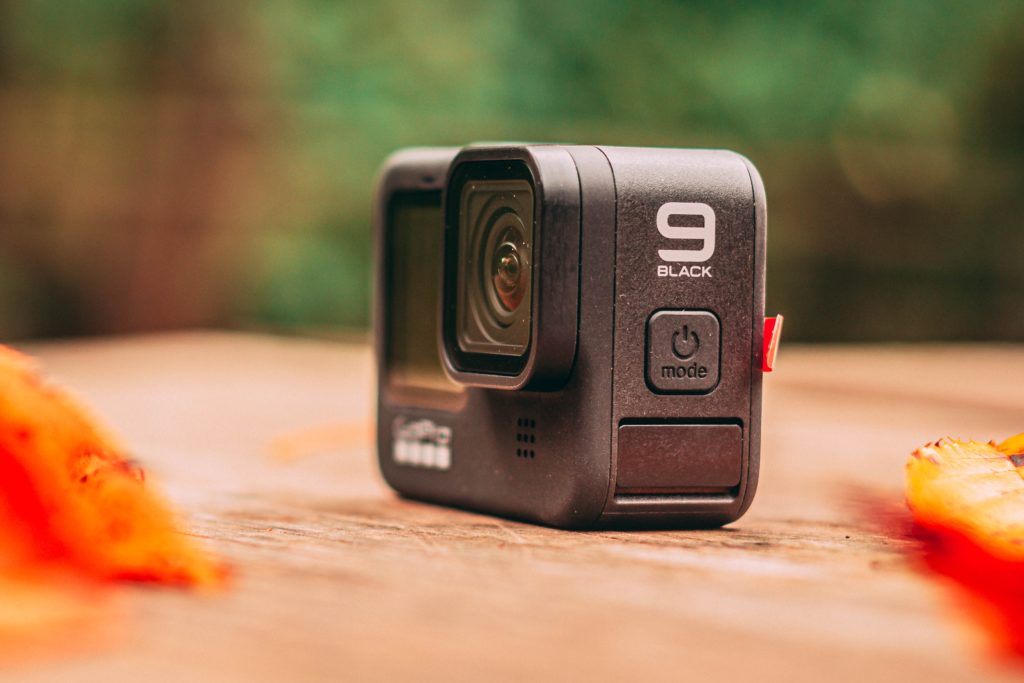
What Can The Osmo Action Do?
Packed within its tiny shell is a powerful little camera. It’s a fixed focal length, very wide-angle, which verges on fisheye, but it’s sharp, contrasty, and gets electronic stabilization in the form of RockSteady.
In video terms, it can shoot 4K footage at 60fps, impressive for a small, relatively cheap camera. It can also shoot in 4K down to 24fps, the cinematic frame rate. Although it does not record in Log, it does include DJI’s cinelike flat profile. This is a flatter contrast profile that can eek a bit more dynamic range from the Osmo’s small sensor.
It can also shoot slow-motion footage in high definition 1080p. That can be either at 120fps or 240fps. The latter giving an ultra slow-motion look to your footage. It’s also pretty fun.
The other key feature for video is a front-facing screen. This is smaller than the rear LCD and is not a touch screen but it does enable you to vlog, and actually see where you are positioned in the frame.
Some of the other modes include time-lapse, hyper-lapse, and stills that can be recorded in Adobe DNG format. There is also a dewarp tool that reduces the relative fisheye effect of the lens, on the fly.
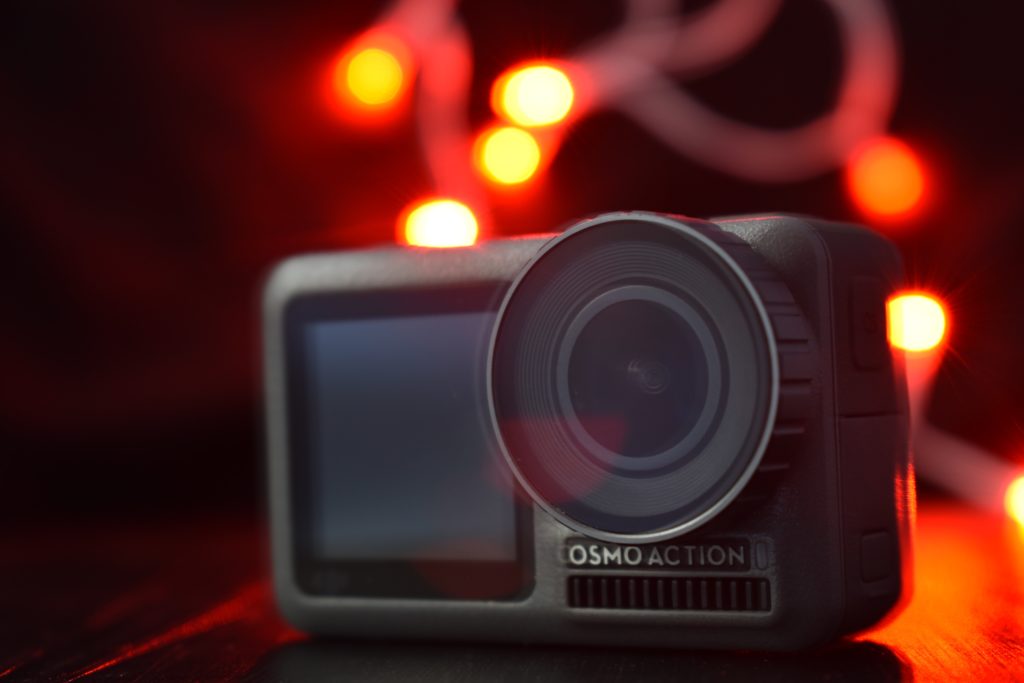
Shooting With The Osmo Action
As mentioned the primary reason I bought the Osmo Action was to vlog. To this end, I mount it on a mini tripod with a mini ball and socket head and set exposure and color balance to auto. This is meant to be a fun/action camera so to maintain the spontaneity of using it, I keep everything as automated as possible.
The Osmo aids that simplicity with its ergonomics. Just three buttons adorn the tiny box. A record button, an on/off button, and a mode button. Pressing the mode button once will switch between the front and rear preview screens. Pressing it multiple times will switch between the various video and photo modes.
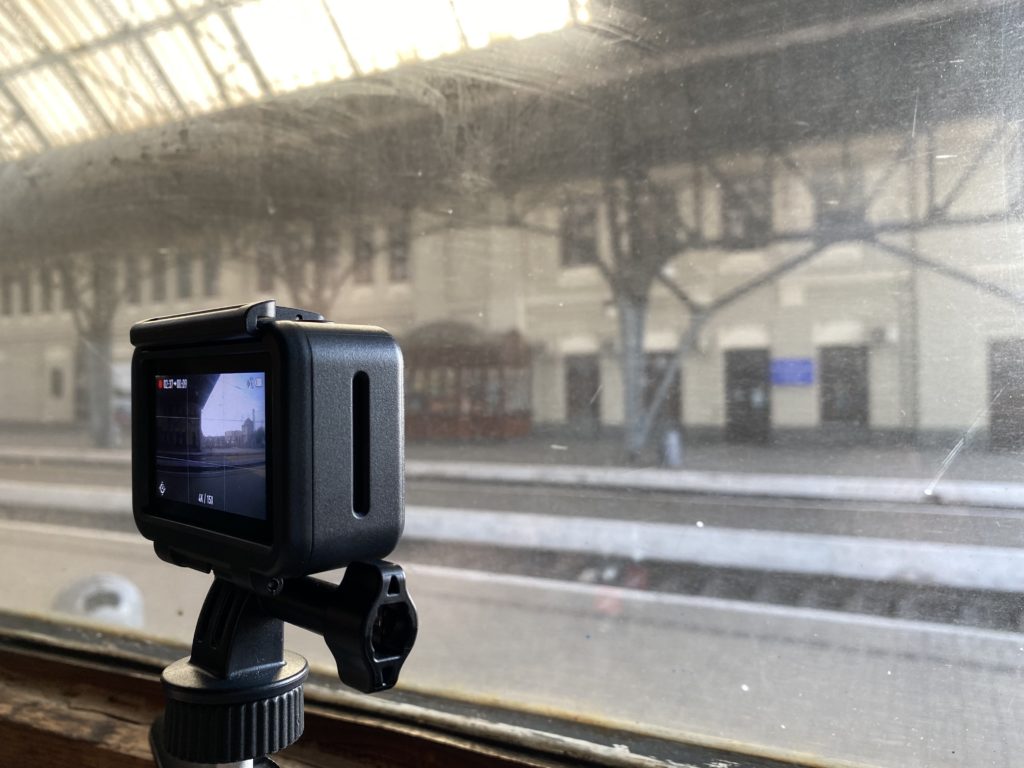
Further modes and settings are accessed via the rear touch screen. Swiping down from the top of the screen reveals a number of configuration settings. Swiping in from the right changes between photo and video modes and allows you to set the dewarp. From the bottom, you access the frame rates and resolutions and from the left, you can preview what you have shot.
Wandering around on my latest travel shoot in Lviv, I found myself having great fun with the Osmo Action. As well as vlogging about my trip, I was finding shots where I could bring the Action’s various modes into play. I have tried hyper-lapses, remarkably easy to do and very effective. Simply set the mode, pick a subject, and then walk keeping that subject more or less in the center. When you have finished, the Osmo Action will smooth out the bumps and create a good-looking clip. Time-lapse is a breeze, real fire and forget. Every time I pass an interesting moving object, be it a tram or a fountain, I am straight into slow-motion mode.
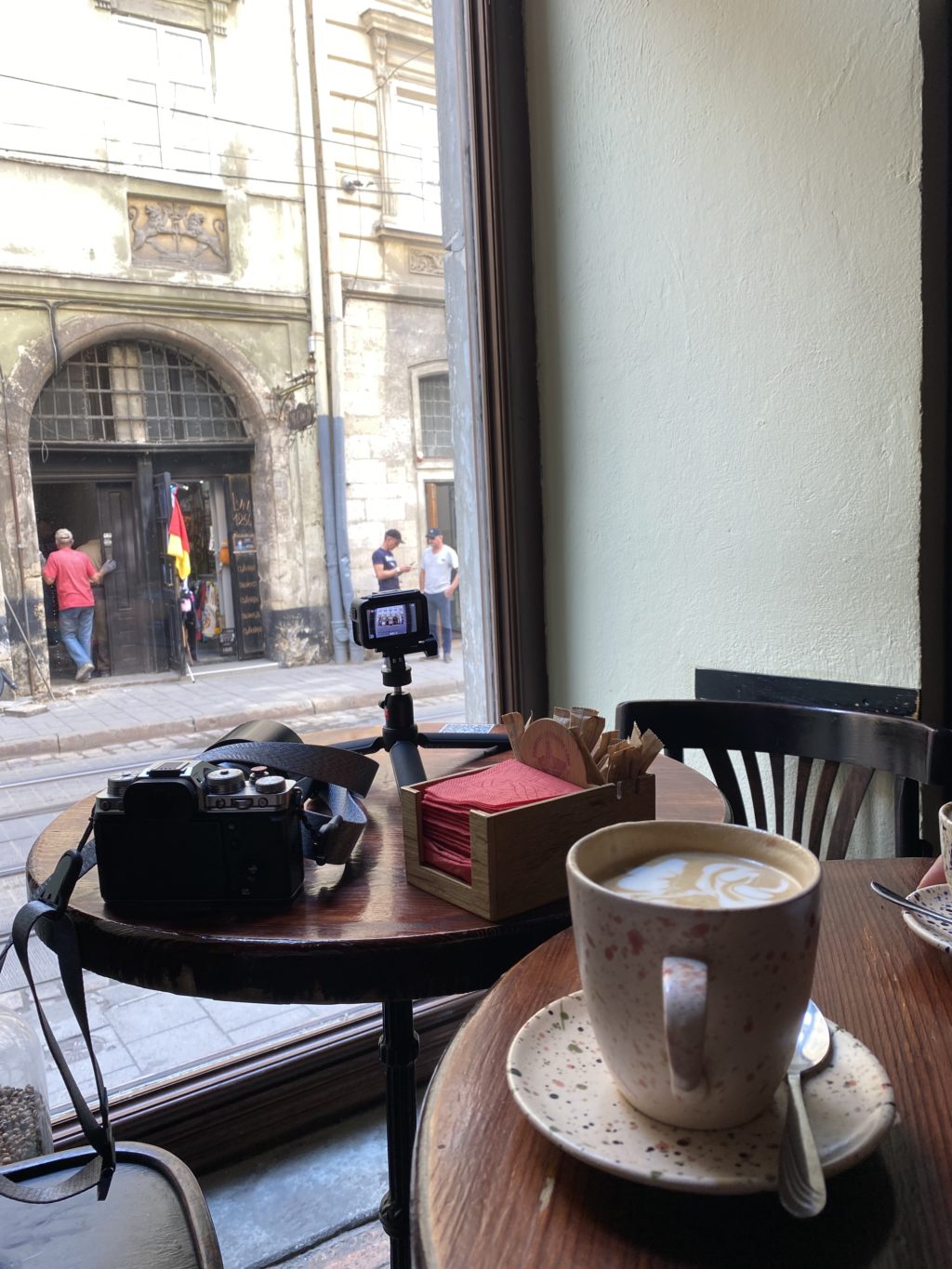
Because I enjoy using it as a straight-up video camera, I find myself vlogging with this camera more and more often. The microphone is not the best quality, it’s adequate at the moment, but I think if I will continue vlogging, it will need a better mic attached. That’s not as simple as it sounds, as an adapter is needed as well as the mic. However, the audio is good enough for the moment, and more importantly, adding a lot of accessories to the camera might actually reduce its spontaneity.

So has the Osmo Action made me want to jump off of mountains? Sadly not, however, it has made me want to go out and experiment with video, time-lapse, and slow-motion as well as uttering my inane ramblings to the camera. That can only be a good thing, apart from the rambling bit, which will be entirely subjective.
If you would like to see my first travel/photography vlog, shot entirely with the Osmo Action, you can check it out here.

